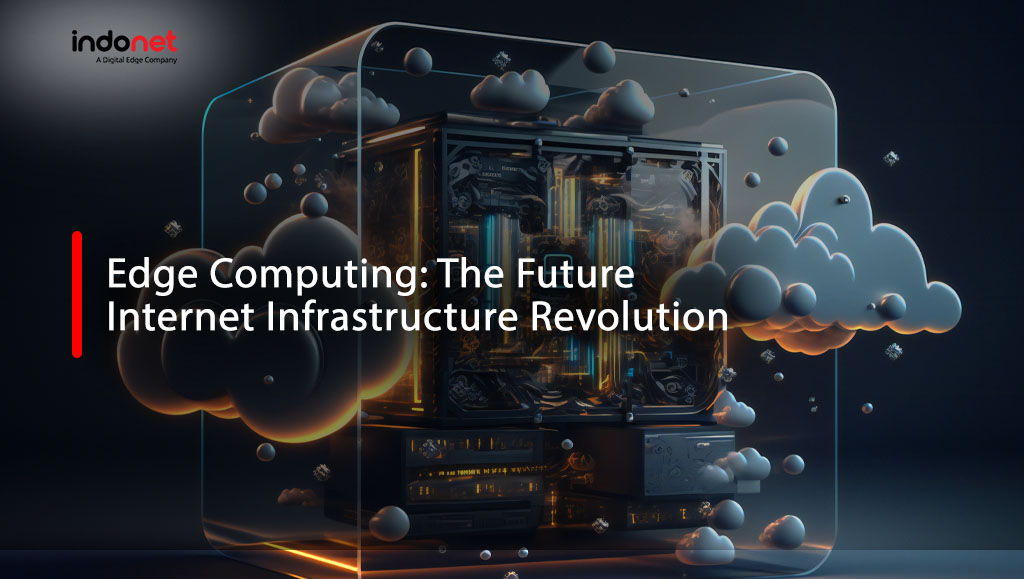The need for fast and efficient data processing is increasing. One emerging technology to meet this need is Edge Computing. Edge Computing is a concept where data is processed near its source, not in a distant data center or cloud. This technology offers many benefits. With rapid technological advancements, Edge Computing has emerged as a vital answer in revolutionizing current and future internet infrastructure. Want to learn more about how Edge Computing revolutionizes future internet infrastructure? Here’s the discussion!
Understanding Edge Computing
Edge Computing has been a focal point in recent years, but its roots run deeper in technology history. To understand its development, it’s important to look at the evolution from Cloud Computing to Edge Computing and the technologies driving the need for data processing at the network’s edge.
Initially, centralized computing was the standard. All data and applications were managed on central mainframes, accessed via connected terminals. With the advent of personal computers (PCs), computing became more decentralized, but there was still a need for more extensive data storage and processing than individual computers could provide.
Cloud Computing took over, allowing data processing and storage in large data centers accessible via the internet. This model offered incredible flexibility and scalability but also posed challenges, particularly concerning latency, bandwidth, and data security.
As the number of IoT (Internet of Things) devices generating large volumes of data increased, the need to process data closer to its source emerged. Edge Computing naturally evolved to address this challenge by processing data at the network’s edge, reducing the need to send data to distant data centers, thereby lowering latency and bandwidth usage.
Technological Advancements Driving Edge Computing
Several key technologies have driven the adoption of Edge Computing, such as:
- Internet of Things (IoT) IoT devices generate large volumes of data that need real-time processing. Processing this data at the network edge allows for faster response and better decision-making.
- 5G 5G networks offer higher speeds and lower latency than previous generations. Edge Computing leverages these advantages by processing data near end-users, maximizing 5G’s potential.
- Artificial Intelligence and Machine Learning AI and ML require fast and efficient data processing. Edge Computing enables AI and ML algorithms to run near data sources, improving performance and responsiveness.
- Blockchain Blockchain technology can integrate with Edge Computing to enhance data security and privacy while providing greater transparency in data processing.
With this background, it is clear that Edge Computing is not just a technology trend but also an evolution driven by the need for faster, more efficient, and secure data processing. These technologies collectively drive the adoption of Edge Computing as an ideal solution for future internet infrastructure.
Key Components of Edge Computing
Edge Computing comprises several key components:
- Edge Nodes Edge Nodes are devices at the network’s edge responsible for processing data generated by end devices. These nodes can be gateways, routers, small servers, or even powerful IoT devices. Edge Nodes handle most data processing before sending it to the cloud or data center for further processing.
- Gateways Gateways act as intermediaries between IoT devices and the broader network. They collect data from various devices, perform pre-processing, and send processed data to edge nodes or the cloud. Gateways can also provide security functions like data encryption and access control.
- IoT Devices and Sensors IoT devices and sensors are the primary data sources in Edge Computing architecture. These devices can include environmental sensors, surveillance cameras, wearables, and more, generating large volumes of data that need real-time processing.
With these components, Edge Computing plays a significant role in the future revolution of internet infrastructure.
Edge Computing in the Future Internet Infrastructure Revolution Edge Computing is a promising approach to addressing current internet infrastructure challenges. By processing data close to its source, Edge Computing offers several significant advantages, making it a crucial pillar in the future internet infrastructure revolution.
- Reduced Latency and Increased Speed Edge Computing processes data locally on devices or nodes near the data source. This significantly reduces latency compared to traditional Cloud Computing models where data must be sent to distant data centers. Lower latency allows applications requiring fast response, such as autonomous vehicles, healthcare applications, and real-time gaming, to function more efficiently and safely.
- Bandwidth Savings By processing data at the network edge, Edge Computing reduces the volume of data that needs to be sent to the cloud or data centers, lowering bandwidth usage and operational costs. These savings are crucial as the number of internet-connected devices (IoT) continues to increase and generate large volumes of data.
- Enhanced Security and Privacy Edge Computing allows sensitive data to be processed near its source, reducing the risk of data breaches during transmission. Data no longer needs to be sent to the cloud for processing, reducing the likelihood of cyberattacks and data leaks. Additionally, local data processing ensures better compliance with increasingly stringent data privacy regulations like GDPR.
- Scalability and Flexibility Distributing the data processing workload across multiple edge nodes offers better scalability. This infrastructure can easily be expanded to meet growing demands without significant upgrades to the main data center. This flexibility allows service providers to quickly adjust processing capacity based on changing demands.
- Support for New Applications Edge Computing opens the door for new applications and services that are impossible or difficult with traditional Cloud Computing models. Examples include augmented reality, virtual reality, and game streaming, which require extremely low latency to provide smooth and responsive user experiences. This technology also enables developing smart cities with more efficient and responsive transportation and traffic management systems.
- Sustainability and Energy Efficiency By reducing the need to transmit data over long distances and processing it in large data centers, Edge Computing can reduce the energy consumption associated with data transmission and data center operations. This reduction contributes to environmental sustainability and helps reduce the carbon footprint of global internet infrastructure.
The Future of Edge Computing With rapid technological advancements, the future of Edge Computing looks bright. Adoption across various sectors will continue to grow, supported by technological innovations such as AI and machine learning, blockchain, and 5G. Collaboration between technology providers, industries, and regulators will play a crucial role in addressing emerging technical and regulatory challenges.
With all its advantages and potential, Edge Computing is poised to become a core component of future internet infrastructure. This technology will not only enhance the efficiency and performance of computing systems but also play a significant role in shaping a safer, more responsive, and sustainable digital ecosystem.
If you want to implement Edge Computing, Indonet can help make it a reality. As a pioneer in providing digital infrastructure services since 1994, Indonet offers a range of solutions and services, including Edge Computing, designed to meet the growing needs of modern businesses. Consult your connectivity needs with Indonet now and experience the quality of our services!

